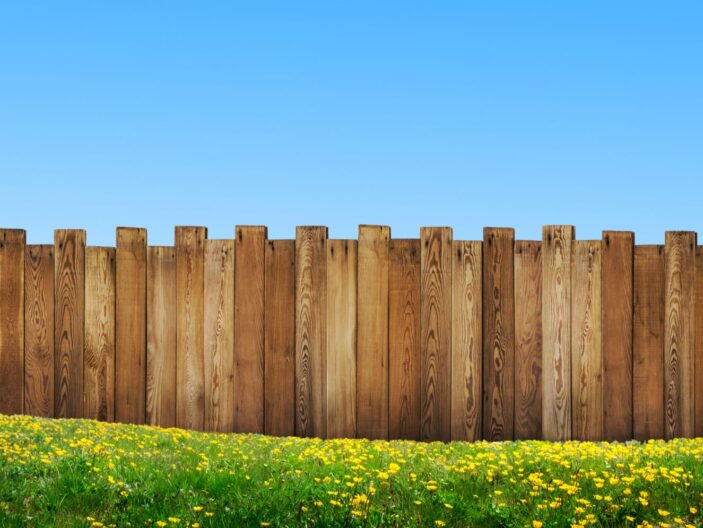Are you considering adding a wooden fence to your property but unsure where to start?
This guide will take you through everything you need to know about wooden fences, including the different types and materials required for installation.
We will provide a step-by-step process for installing a wooden fence and offer tips on proper maintenance.
By the end of this article, you’ll have all the information necessary to make the best decision for your home’s fencing needs.
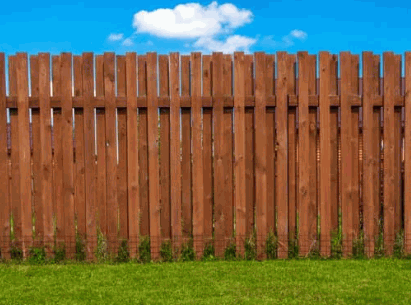
What Is A Wooden Fence?
A wooden fence, commonly referred to as a wood fence, is a structure built primarily from wood that serves as a boundary or enclosure for a property.
Wooden fences are popular for their versatility and natural aesthetic that blends well with various architectural styles. They are not only functional in providing privacy and security but also add charm and character to the landscape.
- The installation of wooden fences involves setting sturdy posts firmly into the ground and attaching panels to create a solid barrier.
- The choice of materials, such as cedar or pressure-treated pine, contributes to the durability and longevity of the fence.
Learn more: How To Protect Fence
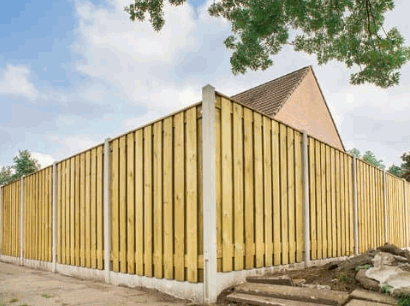
Why Choose A Wooden Fence?
Choosing a wooden fence for your property offers a timeless and classic look, providing privacy, and security, and enhancing the overall aesthetic of your outdoor space.
Wooden fences are a popular choice for homeowners due to their natural beauty that blends seamlessly with various landscape designs. The versatility of wood allows for customization, enabling you to select the perfect style and finish to match your home’s architecture and personal taste. Wooden fences are cost-effective, especially when compared to other materials, as they require lower labor costs for installation. They also tend to adhere easily to building codes, making it simpler to stay within property lines and acquire necessary building permits. Opting for a wooden fence is an environmentally friendly choice, as wood is a renewable resource that can be sustainably sourced.
What Are The Types Of Wooden Fences?
There are several types of wooden fences available, including picket fences, privacy fences, and post and rail fences, each offering unique features and benefits.
One popular option for homeowners is the picket fence, known for its charming and traditional appearance. Picket fences are composed of wood panels attached to fence posts using nails or screws, creating a classic look that complements various architectural styles.
Privacy fences, on the other hand, are taller and more solid, providing excellent security and seclusion. They are commonly built with tightly spaced wood panels to prevent visibility from outside.
Meanwhile, post and rail fences are versatile and commonly used for large properties or farms, offering a more open and rustic appeal.
Picket Fence
A picket fence is a charming and traditional choice for residential properties, typically featuring evenly spaced vertical wooden boards attached to horizontal rails.
These fences are celebrated for their timeless appeal, evoking a sense of homeliness and adding a touch of Americana to any landscape. Their classic look makes them stand out as a picturesque boundary marker in front yards across the country.
In terms of installation, the process involves digging post holes at regular intervals, ensuring each post is level and secure. Using tools like a post-hole digger and measuring tape, homeowners can tailor the height and spacing of the pickets to their preference.
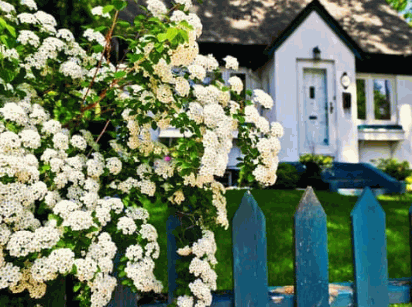
Privacy Fence
A privacy fence is a solid structure designed to shield your property from view and provide seclusion, typically constructed with closely spaced vertical boards or panels.
Privacy fences play a crucial role in defining property boundaries and ensuring security. By delineating the limits of your outdoor space, they prevent unauthorized access and create a safe environment for your family and pets.
Planning the right type of privacy fence is essential, considering factors like the desired level of privacy, aesthetic appeal, and budget.
In terms of materials, options range from classic wood to low-maintenance vinyl or durable metal. Height considerations are important as taller fences offer enhanced privacy and security but must comply with local building codes. Installing a gate facilitates easy access while ensuring proper functionality. Regular maintenance, including inspections and repairs, can prolong the lifespan of your privacy fence and keep it looking its best.
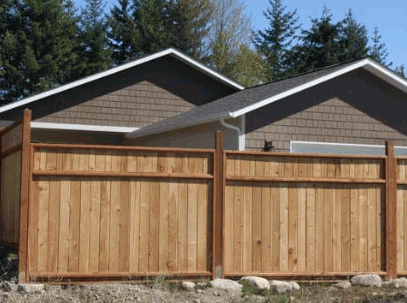
Post And Rail Fence
A post and rail fence is a rustic and open design consisting of horizontal rails attached to sturdy vertical posts, ideal for delineating property lines or enclosing large areas.
The simplicity and charm of a post and rail fence make it a popular choice for rural landscapes, farms, and pastures. These fences blend seamlessly with the natural surroundings, enhancing the aesthetic appeal of the property. They provide a traditional, yet practical way to mark boundaries and keep livestock secure.
In terms of installation, setting the vertical posts securely in the ground is crucial. Proper spacing and alignment of the rails ensure a sturdy structure. Regular maintenance involves checking for loose stakes, reapplying protective coatings, and inspecting for any damage caused by harsh weather conditions or nearby utilities.
Customization options for post and rail fences are versatile. Homeowners can choose different materials for the rails, such as wood or vinyl, to suit their preferences and enhance durability. The fence height and design can also be tailored to meet specific needs, adding a personalized touch to the property.
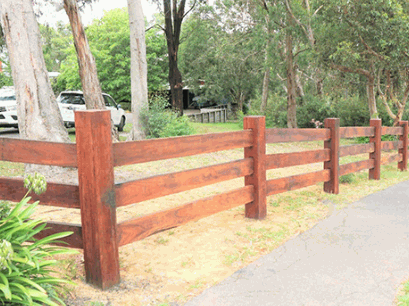
What Materials Do You Need To Install A Wooden Fence?
To install a wooden fence, you will need essential materials such as wood panels, fence posts, nails or screws, a post-hole digger, a level, and a measuring tape.
In terms of installing a wooden fence, the quality of materials used can significantly impact the durability and overall appearance of the fence. Using high-grade wood panels, sturdy fence posts, heavy-duty exterior screws, and all-purpose gravel for stability ensures that the fence will withstand weather conditions and last for years to come.
Plus the materials, having the right tools and equipment is crucial for a successful installation. Tools such as a post-hole digger, a level for accuracy, and a measuring tape for precise measurements will help streamline the process and ensure a professional finish.
Wood Panels
Wood panels are the main components of a wooden fence, available in various styles and sizes to suit different design preferences and property requirements.
The role of cedar wood panels in a fence structure goes beyond just aesthetics. Cedar is often chosen for its durability and resistance to rot, making it ideal for outdoor use. When considering quality, factors such as thickness, grain patterns, and finishing should be taken into account. Proper treatment options for cedar panels, such as staining or sealing, can help extend their lifespan and maintain their appearance over time.
For customization, homeowners can choose from a range of panel designs, from classic pickets to modern horizontal slats. Cost estimates for wood panels vary depending on the type of wood, dimensions, and installation requirements such as digging post holes and ensuring panel alignment is level.
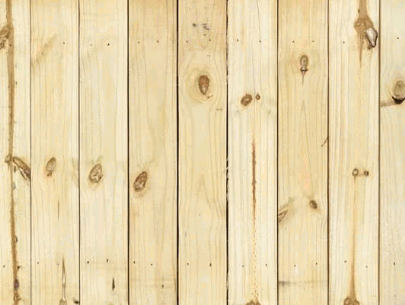
Fence Posts
Fence posts are crucial for providing stability and support to a wooden fence, serving as the foundation for the entire structure.
Choosing the right type of fence posts is essential to ensure the longevity of your fence. Common materials for fence posts include wood, metal, and vinyl. Wood posts are popular for their natural aesthetics, while metal posts offer durability.
When installing fence posts, it’s crucial to dig holes to an appropriate depth to provide stability. Anchoring techniques such as using concrete can further enhance the strength of the posts, ensuring that your fence can withstand external forces.
Properly anchored and sturdy fence posts are key to a robust and long-lasting fence.
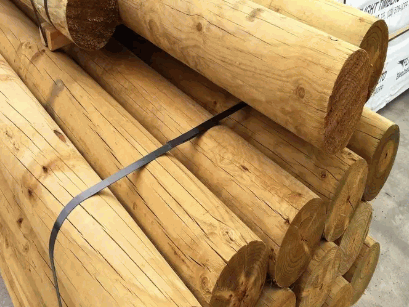
Nails Or Screws
Nails or screws are essential for attaching wood panels to fence posts securely, ensuring the structural integrity and longevity of the wooden fence.
Choosing the right type of fastener is crucial to prevent the fence from sagging or becoming loose over time. Galvanized screws are ideal for outdoor applications as they are corrosion-resistant, whereas nails are a more traditional option that can also work well.
Proper installation techniques involve using a level to ensure the panels are straight and uniform. Spacing the fasteners evenly along the panel and post will distribute the weight evenly, preventing stress points. This meticulous approach not only enhances the fence’s appearance but also contributes to its overall stability.
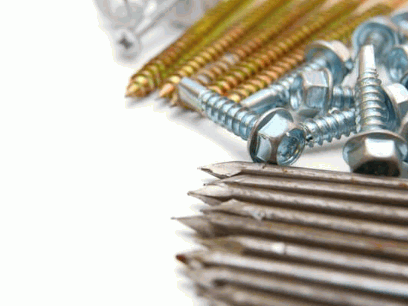
Post Hole Digger
A post-hole digger is a tool that simplifies the process of digging precise holes for installing fence posts, ensuring proper alignment and stability of the wooden fence.
When using a post-hole digger, it is essential to follow a few crucial steps to achieve the best results. First, determine the exact location where you want the post hole to be dug. Then, firmly grip the handles of the post-hole digger and position the blades at the starting point of the hole. Push the blades into the ground using your body weight, ensuring they go straight down. Rotate the digger slightly to break the soil and continue pushing down until you reach the desired depth.
Remember to periodically remove the tool from the hole to clear out any loose dirt and debris. This will help maintain the efficiency of the digger and prevent any blockages. Ensure that you wear appropriate safety gear such as gloves and sturdy footwear to protect yourself from potential injuries. By following these steps and safety measures, you can effectively use a post-hole digger to create stable and durable foundations for your fence posts.
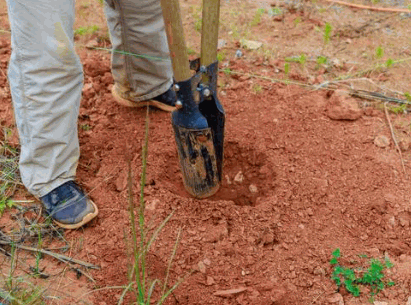
Level
A level is a vital tool for ensuring that the wooden fence components are installed horizontally and evenly, maintaining a uniform and professional appearance.
In terms of fence installation, achieving a straight and level fence is not only important for aesthetics but also for the structural integrity of the fence. Using a level helps prevent sloping, crookedness, and uneven gaps between the panels. To ensure proper alignment, start by placing the level horizontally on the top rail of the fence to check for any deviations. Adjust the fence posts accordingly by either digging deeper or adding more soil at the base until the level indicates uniformity.
Measuring Tape
A measuring tape is critical for accurately determining dimensions, distances, and spacing during the wooden fence installation process, ensuring precision and uniformity.
Proper measurements are crucial as they dictate the entire layout of the fence and impact its visual appeal and functionality. Precision is key when it comes to positioning fence posts at the correct intervals, ensuring that the fence panels fit seamlessly. By carefully measuring the distances between posts and ensuring consistent spacing, you can achieve a professional and polished finish.
Consider the terrain and any obstacles that may affect the fence line before measuring. Level ground often simplifies installation, while sloped areas require special attention to ensure a level fence appearance. Remember to account for gates and corners to avoid miscalculations in materials or post placements.

How To Install A Wooden Fence?
Installing a wooden fence involves meticulous planning, precise measurements, proper post placement, secure panel attachment, and attention to detail to ensure a durable and visually appealing structure.
To start the fence installation process, begin by marking where the post holes should be dug along the fence line. Use a post-hole digger to create holes of appropriate depth and width based on the size of your fence posts. Ensure that the posts are leveled and aligned properly before filling the holes with concrete for stability. Once the posts are set, start attaching the fence panels securely to them, ensuring uniformity in spacing and height. Remember to check local regulations and obtain any necessary building permits before proceeding further.
Plan And Measure The Area
Before installing a wooden fence, it is essential to plan the layout, measure the area accurately, and mark the positions for fence posts to ensure a well-organized and symmetrical installation.
Thorough planning is the cornerstone of a successful fence project. Start by considering the purpose of the fence – whether it’s for privacy, security, or aesthetic enhancement.
Mapping out the layout ensures that the fence complements the property’s aesthetics and serves its intended function effectively. In terms of measuring the property dimensions, accuracy is key. Utilize tools like a tape measure or laser level to determine the precise boundaries and dimensions.
Dig Post Holes
Digging post holes at appropriate intervals and depths is crucial for the stability and alignment of a wooden fence, ensuring a strong foundation for the structure.
When embarking on the task of digging post holes for your fence, it’s important to first mark the locations where the posts will be placed. This helps maintain consistency in spacing, typically around 6 to 8 feet apart for wooden fences, although this can vary based on the type of fence and local building codes. The depth of the holes is equally vital, typically ranging from 1/3 to 1/2 of the above-ground height of the post. Specialized tools such as post-hole diggers or augers can greatly assist in this process by efficiently creating the necessary holes with minimal effort.
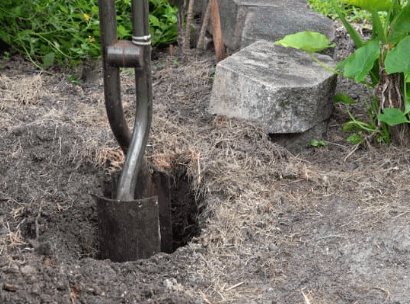
Install Fence Posts
Installing fence posts involves setting them securely in the ground, aligning them accurately, and ensuring they are level and plumb to support the weight and structure of the wooden fence.
One common anchoring method is using a quick-setting concrete mix, which offers a fast and secure way to hold the posts in place. Another option is to fill the post holes with a mixture of all-purpose gravel and cement, providing stability and drainage.
In terms of bracing techniques, diagonal bracing is often recommended to prevent leaning or shifting of the posts, especially in areas with high winds. Proper alignment of the posts is crucial to maintain the straightness of the fence line, and using exterior screws for attaching the fence panels ensures a strong and durable connection.
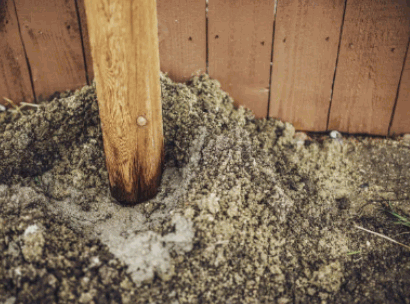
Attach Wood Panels
Attaching wood panels to fence posts is a critical step in constructing a wooden fence, requiring precision, alignment, and secure fastening to create a cohesive and visually appealing structure.
When positioning the wood panels, ensure that they are level and plumb to maintain a professional finish. Use a circular saw to cut the panels to the desired length, and an electric miter saw to create angled cuts for corners and gates. Proper spacing between panels is essential to prevent warping and allow for airflow. Utilize a cordless drill to attach the panels securely to the fence posts with screws or nails, ensuring consistent spacing and alignment throughout the installation process.
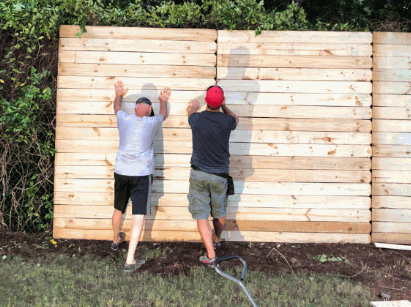
Secure The Fence Panels
Securing the fence panels involves reinforcing their attachment to the fence posts, checking for stability, adjusting alignments, and ensuring proper fastening to prevent sagging or structural issues.
Proper reinforcement of attachment is crucial to maintain the structural integrity of the fence. By using level and exterior screws to securely fasten the panels to the posts, you significantly reduce the risk of sagging or instability over time. Implementing bracing techniques, such as diagonal supports or tension wires, can further enhance the strength of the fence system. To ensure precise installation, employing a bubble level for alignment adjustments is essential. Taking these measures not only improves the aesthetics of the fence but also enhances its durability and longevity.
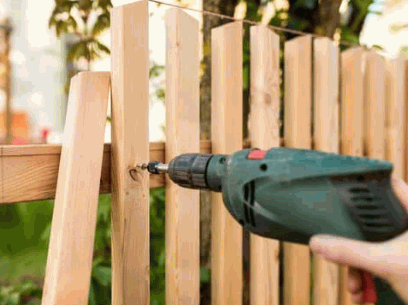
How To Maintain A Wooden Fence?
Proper maintenance of a wooden fence includes regular cleaning to remove dirt and debris, timely repairs to address damages, and applying protective coatings to enhance durability and aesthetics.
To keep your wooden fence looking its best, consider staining or painting it every few years to protect against weathering and UV damage. Cedar fences, known for their natural beauty and resistance to rot, can benefit from a clear finish to highlight the wood grain.
- When cleaning a wooden fence, use a mixture of mild soap and water to scrub away dirt and mold, avoiding harsh chemicals that can damage the wood.
- For repairs, replace any broken or warped boards promptly to prevent further deterioration.
- Consider sealing your fence with a weather-resistant sealant to prevent moisture damage and prolong its lifespan.
Regularly Clean The Fence
Regularly cleaning a wooden fence helps maintain its appearance, prevents mold or mildew growth, and extends the longevity of the wood by removing accumulated dirt and grime.
In terms of choosing suitable cleaning agents for your wooden fence, opt for environmentally friendly options such as a mixture of mild soap and warm water to avoid any harsh chemicals that may damage the wood fibers. Soft bristle brushes or sponges are ideal tools for scrubbing off dirt without causing scratches.
For tougher stains or mildew, a solution of white vinegar and water can be highly effective. Always remember to test any cleaning solution on a small inconspicuous area first to ensure it does not cause discoloration.
Scheduling regular maintenance routines for your fence can significantly reduce the cost of repairs in the long run. Inspect the posts and rails for any signs of damage while ensuring proper cleaning to keep your wooden fence looking its best.
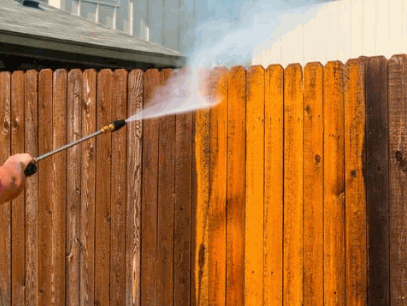
Repair Any Damages
Timely repair of damages such as cracks, rot, or loose panels is essential to prevent further deterioration and maintain the structural integrity and aesthetics of a wooden fence.
Common damages that wooden fences may face include weather-induced warping, termite infestation leading to weakening of the wood, and weakening of the fence’s stability due to loose posts.
To address cracks and rot, consider using gate kits to reinforce weak areas and replace damaged sections. Termite damage can be mitigated by treating the wood with appropriate solutions. In cases of compromised stability, reinforcing posts with cement can significantly improve the overall strength of the fence.
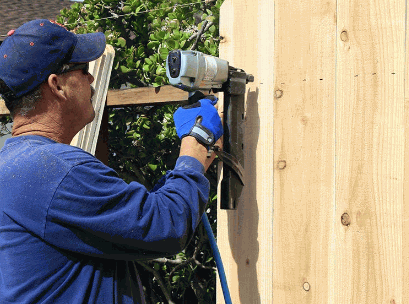
Apply Protective Coating
Applying a protective coating such as stain or sealant to a wooden fence helps safeguard it against environmental elements, UV exposure, moisture, and rot, enhancing its longevity and visual appeal.
Choosing the right protective coating is crucial for maintaining the beauty and durability of your wooden fence. One popular option is using high-quality cedar pickets to enhance both protection and aesthetics. Cedar is naturally resistant to decay and insects, making it an ideal choice for outdoor structures. In terms of applying the coating, methods like brushing, rolling, or spraying can be used, depending on the product and surface area. Regular maintenance, including recoating every few years, can significantly extend the life of your fence, keeping it looking fresh and protecting it from the elements.

